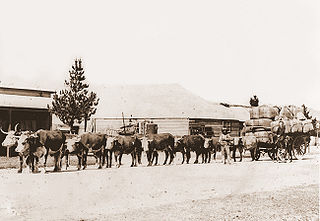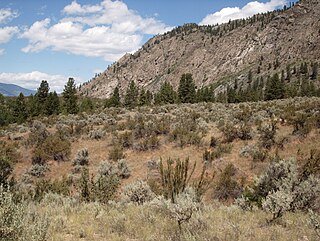
Felidae is the family of mammals in the order Carnivora colloquially referred to as cats. A member of this family is also called a felid. The term "cat" refers both to felids in general and specifically to the domestic cat.
Genus is a taxonomic rank used in the biological classification of living and fossil organisms as well as viruses. In the hierarchy of biological classification, genus comes above species and below family. In binomial nomenclature, the genus name forms the first part of the binomial species name for each species within the genus.

Sharks are a group of elasmobranch fish characterized by a cartilaginous skeleton, five to seven gill slits on the sides of the head, and pectoral fins that are not fused to the head. Modern sharks are classified within the clade Selachimorpha and are the sister group to the Batoidea. Some sources extend the term "shark" as an informal category including extinct members of Chondrichthyes with a shark-like morphology, such as hybodonts. Shark-like chondrichthyans such as Cladoselache and Doliodus first appeared in the Devonian Period, though some fossilized chondrichthyan-like scales are as old as the Late Ordovician. The oldest confirmed modern sharks (selachimorphs) are known from the Early Jurassic, about 200 million years ago, though records of true sharks may extend back as far as the Permian.

The parvorder Catarrhini, catarrhine monkeys, Old World anthropoids, or Old World monkeys, consists of the Cercopithecoidea and apes (Hominoidea). In 1812, Geoffroy grouped those two groups together and established the name Catarrhini, "Old World monkeys",. Its sister in the infraorder Simiiformes is the parvorder Platyrrhini. There has been some resistance to directly designate apes as monkeys despite the scientific evidence, so "Old World monkey" may be taken to mean the Cercopithecoidea or the Catarrhini. That apes are monkeys was already realized by Georges-Louis Leclerc, Comte de Buffon in the 18th century. Linnaeus placed this group in 1758 together with what we now recognise as the tarsiers and the New World monkeys, in a single genus "Simia". The Catarrhini are all native to Africa and Asia. Members of this parvorder are called catarrhines.

Megophryidae, commonly known as goose frogs, is a large family of frogs native to the warm southeast of Asia, from the Himalayan foothills eastwards, south to Indonesia and the Greater Sunda Islands in Maritime Southeast Asia, and extending to the Philippines. Fossil remains are also known from North America. As of 2014 it encompasses 246 species of frogs divided between five genera. For lack of a better vernacular name, they are commonly called megophryids.

Endemism is the state of a species only being found in a single defined geographic location, such as an island, state, nation, country or other defined zone; organisms that are indigenous to a place are not endemic to it if they are also found elsewhere. For example, the Cape sugarbird is found exclusively in southwestern South Africa and is therefore said to be endemic to that particular part of the world. An endemic species can also be referred to as an endemism or, in scientific literature, as an endemite.

A working animal is an animal, usually domesticated, that is kept by humans and trained to perform tasks instead of being slaughtered to harvest animal products. Some are used for their physical strength or for transportation, while others are service animals trained to execute certain specialized tasks. They may also be used for milking or herding. Some, at the end of their working lives, may also be used for meat or leather.

Conservation International (CI) is an American nonprofit environmental organization headquartered in Crystal City, Arlington, Virginia.

A flower, also known as a bloom or blossom, is the reproductive structure found in flowering plants. Flowers consist of a combination of vegetative organs – sepals that enclose and protect the developing flower, petals that attract pollinators, and reproductive organs that produce gametophytes, which in flowering plants produce gametes. The male gametophytes, which produce sperm, are enclosed within pollen grains produced in the anthers. The female gametophytes are contained within the ovules produced in the carpels.

Euroscaptor is a genus of mammal in the family Talpidae. Members are found in China and South & Southeast Asia. It contains the following species as of October 2021:

Sepiadarium kochi, common name tropical bottletail squid or Koch's bottletail squid, is a species of cuttlefish.
The Beijing barbastelle, also known as the Beijing wide-eared bat, is a species of vesper bat endemic to Beijing Municipality, China. The species was discovered by Chinese zoology students in 2001 in caves of Fangshan District in southwestern Beijing and was identified as a distinct species by zoologists Zhang Shuyi, Gareth Jones, Zhang Jingshuo and Han Naijian in 2007.

iNaturalist is an American 501(c)(3) nonprofit social network of naturalists, citizen scientists, and biologists built on the concept of mapping and sharing observations of biodiversity across the globe. iNaturalist may be accessed via its website or from its mobile applications. iNaturalist includes an automated species identification tool, and users further assist each other in identifying organisms from photographs. As of 17 June 2023, iNaturalist users had contributed approximately 161,278,660 observations of plants, animals, fungi, and other organisms worldwide, and around 350,000 users were active in the previous 30 days.

The fauna of Louisiana is characterized by the region's low swamplands, bayous, creeks, woodlands, coastal marshlands and beaches, and barrier islands covering an estimated 20,000 square miles, corresponding to 40 percent of Louisiana's total land area. Southern Louisiana contains up to fifty percent of the wetlands found in the Continental United States, and are made up of countless bayous and creeks.
Animal Ethics is a nonprofit organization formed to promote discussion and debate around issues in animal ethics and to provide information and resources for animal advocates. They also do outreach work in several countries on the issue of speciesism. Their aim is to create a world where moral consideration is extended to all sentient beings. The organization's website covers topics such as speciesism, sentience, veganism and wild animal suffering and has content translated into several languages.

The Ōshima Strait is a strait between the islands of Amami Ōshima and Kakeromajima in Japan. It is part of the Amami Guntō National Park. From the western most side to the eastern most side of the strait, the strait measures 17.5 miles (28.2 km) long.

South Okanagan—Similkameen National Park Reserve is a proposed national park reserve located in the Regional District of Okanagan-Similkameen of British Columbia. The goal of the park is to work with the local First Nations to protect a large patch of Okanagan dry forests and part of the northern reach of the Columbia Plateau ecoregion in Canada.













